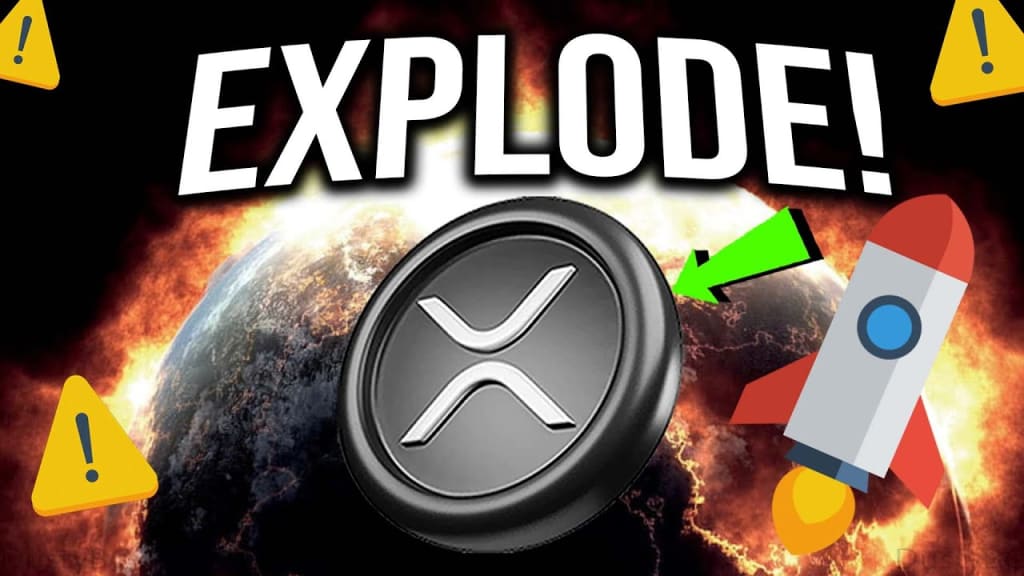Content warning
This story may contain sensitive material or discuss topics that some readers may find distressing. Reader discretion is advised. The views and opinions expressed in this story are those of the author and do not necessarily reflect the official policy or position of Vocal.
Exploring XRP:
The Digital Asset Transforming Cross-Border Payments

Introduction:
XRP, a digital asset created by Ripple Labs, has emerged as one of the leading cryptocurrencies in the market. With its focus on revolutionizing cross-border payments, XRP offers fast and cost-effective transactions, aiming to transform the traditional financial system. In this article, we delve into the world of XRP, exploring its origins, key features, use cases, and the potential impact it may have on global finance.
Part 1: Understanding XRP and Ripple
XRP is a cryptocurrency that operates on a decentralized ledger known as the XRP Ledger. It was launched in 2012 by Ripple Labs, a technology company focused on developing innovative solutions for cross-border payments. While Ripple and XRP are often used interchangeably, it is important to note that Ripple is the company behind XRP and its underlying technology.
Part 2: The Benefits of XRP
XRP offers several advantages that set it apart from traditional financial systems and other cryptocurrencies. Its primary benefits include speed, scalability, low transaction costs, and liquidity. XRP transactions settle within seconds, making it a suitable option for near-instant cross-border payments. Additionally, its scalability allows for high transaction throughput, enabling the network to handle a large volume of transactions efficiently.
Part 3: XRP as a Bridge Currency
One of the key use cases of XRP is its role as a bridge currency in cross-border payments. Traditionally, international money transfers involve multiple intermediaries and can take several days to settle. XRP streamlines this process by acting as a bridge between different currencies. With XRP, funds can be converted into the digital asset and then quickly converted into the desired destination currency, reducing costs and settlement times.
Part 4: RippleNet and Partnerships
Ripple, the company behind XRP, has developed a global payment network called RippleNet. This network connects financial institutions, payment providers, and other entities, facilitating fast and efficient cross-border transactions. RippleNet has garnered significant partnerships with banks and financial institutions worldwide, expanding the reach and adoption of XRP as a solution for cross-border payments.
Part 5: Regulatory Considerations
As with any digital asset, XRP operates within a regulatory framework that evolves over time. The legal status of cryptocurrencies varies across jurisdictions, and regulatory clarity plays a crucial role in the widespread adoption of XRP. Ripple has actively engaged with regulators and worked towards compliance to ensure that its technology and XRP offerings align with regulatory requirements.
Part 6: Potential Impact on Global Finance
The potential impact of XRP on global finance is significant. By providing a faster, cheaper, and more efficient alternative to traditional cross-border payments, XRP has the potential to revolutionize the way funds are transferred globally. The reduced costs and settlement times offered by XRP could benefit businesses, individuals, and financial institutions, fostering greater financial inclusion and global economic integration.
Part 7: Challenges and Criticisms
While XRP has gained popularity and recognition, it has also faced challenges and criticisms. One notable criticism is the ongoing legal battle between Ripple Labs and the U.S. Securities and Exchange Commission (SEC) regarding the regulatory status of XRP. The outcome of this case may have implications for the future of XRP and its adoption in the United States. Additionally, concerns have been raised about the centralization of XRP and its distribution model.
Part 8: Future Developments and Adoption
The future of XRP hinges on continued technological advancements, regulatory developments, and market adoption. Ripple Labs continues to innovate and explore new use cases for XRP, such as micropayments and decentralized finance (DeFi). Increased regulatory clarity and expanded partnerships will also play a vital role in shaping the future of XRP and its integration into the global financial system.
Conclusion:
XRP, with its focus on transforming cross-border payments, has emerged as a prominent digital asset with the potential to reshape the global financial landscape. With its speed, scalability, and low transaction costs, XRP offers a compelling solution for efficient and cost-effective international transactions. As Ripple continues to develop its ecosystem and expand its partnerships, XRP's adoption and impact on global finance are expected to grow. However, challenges and regulatory considerations must be addressed to ensure its long-term success. As XRP evolves and matures, its role as a bridge currency and a catalyst for innovation in cross-border payments holds immense promise for the future of finance.
About the Creator
Enjoyed the story? Support the Creator.
Subscribe for free to receive all their stories in your feed. You could also pledge your support or give them a one-off tip, letting them know you appreciate their work.





Comments
There are no comments for this story
Be the first to respond and start the conversation.